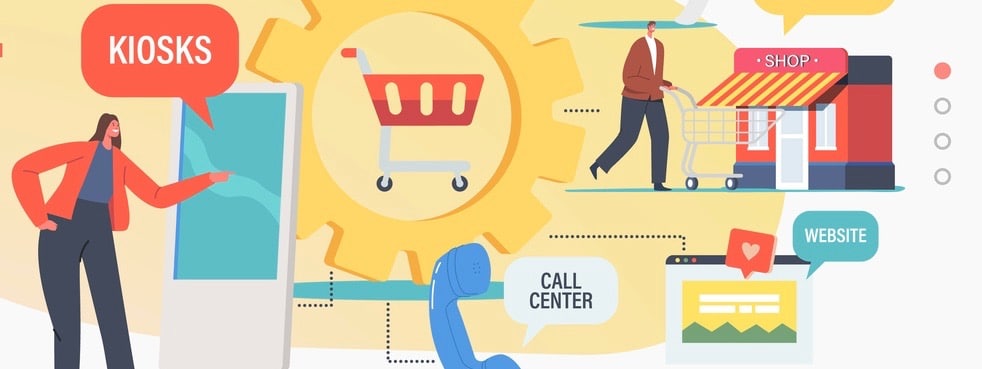Omnichannel marketing is a multichannel and/or public relations strategy that gives customers a unified brand experience across all customer touchpoints. To remain relevant today, marketers have to acquire and retain customers in a challenging environment. Omnichannel marketing involves the integration of various channels that organizations use to interact with their customers to create a seamless user experience.
The brand value, message, and all-around experience is consistent under omnichannel marketing. Even if customers move across channels or devices, they can easily do so because they are being provided with a connected and shared system. This form of marketing helps customers engage with brands on their own terms, resulting in a better customer experience.
Many businesses that relied on in-store services have had to think differently because of the coronavirus outbreak. They had to step up their actions to go live online. Education, tourism, real estate, together with other sectors are now elevating their marketing efforts online as the pandemic showcases the advantages of digital channels. The crisis also reinforces the resilience of the businesses already using omnichannel marketing in a time of uncertainty and crisis.
For this type of marketing strategy, companies need to focus on three aspects-
- Seamless connectivity across channels
- Consistency of experience across channels
- Synergy between channels
This strategy combines the worlds of websites, retargeted ads, emails, social media marketing, and brick-and mortar stores.
Difference between omnichannel marketing and multichannel marketing
The main difference between multichannel marketing and omnichannel marketing is that multichannel marketing stresses the channel as the center of its efforts, while omnichannel marketing takes into account the customer journey that may span multiple channels, and looks at how to create the best experience as customers move between them.
The multichannel strategy is simpler in its intention, which is to distribute content across various channels. The consumer can choose where they want to interact with the brand. However, the content within these channels is very often isolated from each other.
The omnichannel strategy also makes brands reachable across offline and online channels, but it elevates the experience as it goes a step further to ensure an integrated experience across each channel. Using the omnichannel strategy can lead to the benefits given below:
1) Enhanced customer experience
Omnichannel marketing customizes messages for audiences. This level of personalization leads to better customer experiences and more conversions. By focusing on the customer rather than on the platform, companies can drive more sales and increase retention rates. Rustic Escentuals creates an excellent omnichannel experience for customers. Customers can browse their products in their Facebook shops and get instant support through Facebook Messenger. They organize annual scent events so that everyone can smell the fragrances produced by them. This also provides an opportunity to meet their staff. They also have crafting classes and a newsletter full of useful crafting tricks.
2) Cohesive brand recognition
The seamless strategy across channels helps to build an easily identifiable brand image and tone. This leads to increased awareness from the target market. Cohesive brand recognition gives businesses a significant advantage over their competition. It is important to leverage brand visuals and content. For instance, customers can be shown ads on their Facebook feeds after they have visited the website of a business. They can also be shown ‘similar’ items in their online cart prior to or after they complete a purchase. This type of personalized marketing can help move customers towards conversion.








